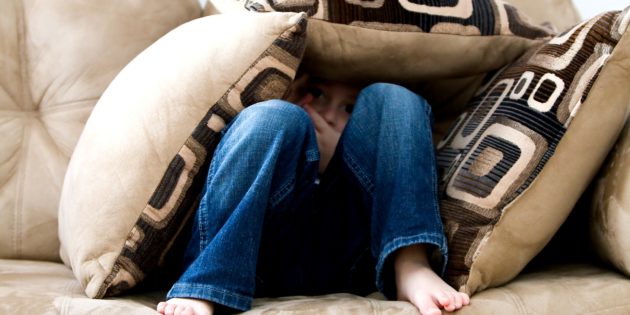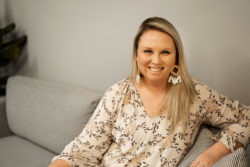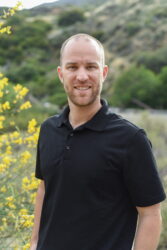Sensory Processing Disorder goes by many names (Sensory Integration Dysfunction, Neurosensory Dysfunction, etc.) but no matter what you call it, the underlying causes of it don’t change. What is more, we strongly feel that sensory issues are one of the most commonly missed diagnoses out there. A properly trained health care provider understands that many common conditions such as ADD/ADHD, Autism Spectrum Disorders, and many Learning and Behavioral Issues have many sensory-based challenges, and therefore proper care of these challenges must address the sensory processing aspect.
Unfortunately, most of our current health care providers have little to no clue how to recognize and treat sensory challenges, especially in young children. There are many warning signs that sensory challenges are developing, but too often are missed at a young age and dismissed by the child’s doctor with “he’ll grow out of it” or “let’s wait and see what happens.”
Well, waiting and seeing is the same as doing nothing, and too often these children have a difficult time later in life overcoming these challenges. It is our mission to educate the community, and especially parents, how to recognize these challenges and also how to treat them as soon as possible.
In most cases when these sensory challenges are finally realized, therapy is the first option. If done properly this care is usually done by specifically trained occupational and/or physical therapists in a “sensory gym” or setting. While we support this form of therapy whole-heartedly, with Pediatric Chiropractic care we offer a different approach that zeroes in on addressing the root cause of the challenges and imbalances.
So, What Causes It?
Our sensory system is a “read and react” system. What this means is that our body is “preprogrammed” to respond appropriately to environmental stimuli. This programming occurs throughout life and can be thought of as ‘sensory learning’ or processing.
The clearest example of this is a child placing their hand upon a hot stove… once it is done, it is rarely done again. This is because the burning and painful ‘sensation’ of the hot stove becomes ingrained in our sensory memory, and helps prevent us from making this mistake again. All sensory patterns in the body work in this way.
This great quote from Dr. Bruce Lipton really helps explain things further:
“The function of the nervous system is perceive the environment and coordinate the behavior of all other cells.”
The key elements to understand here are PERCEPTION and COORDINATION. Without proper perception, there cannot be proper (normal) coordination. Kids who suffer from SPD have an inability to properly perceive their environment, whether that be from vision, hearing and sounds, balance and coordination, touch and tactile sense, or others.
For children with SPD, this system “perception and coordination” system is essentially not “programmed” correctly. For various reasons, it becomes imbalanced and disorganized as the child develops, leading to improper neurological and brain development.
This can be caused by a variety of different things. In our office the most common causes we encounter are traumatic birth injuries to the upper neck and brainstem regions (ie. forceps, vacuum extraction, C-section), childhood falls, and improper development through excessive use of infant car carriers, walkers, and jumpers.
The birth injury aspect is likely the most impactful, and unfortunately most overlooked and unknown. The reason this injury so commonly leads to neurological challenges related to “perception and coordination” or processing/integrating type functions, is that this area of the brain and nervous system is the area most responsible for these functions, specifically the brainstem, cerebellum, and a specific nerve called the Vagus Nerve.
The best way to understand this is to think of the entire nervous system (brain, spinal cord, and nerves) as the “Air Traffic Control System” for the entire body. It’s constantly PERCEIVING the environment through it’s millions and millions of sensory receptors and nerve endings, and then “reading and responding” accordingly.
Taking the analogy a step further, it’s important to know that the brainstem and upper neck regions essentially act as the “Air Traffic Control Tower” and are largely responsible for the processing, integrating, organization, and “filtering” of sensory information from all over the body. Another words, it is in charge of letting certain sensory information “in” and moves it on up the ladder to higher brain regions such as the prefrontal cortex… and in turn, it “filters” out all of the sensory information not deemed important enough to reach those higher centers.
What kids who suffer from things like SPD, ADD/ADHD, and ASD have in common, is that they have an inability to properly process, integrate, coordination, and adapt to their sensory environment. All of these issues are really neurological INPUT and COORDINATION problems, not output and behavior problems.
The most common forms of treatment for these issues today are still focusing on modifying behavior, or output. But if we go back to that quote from Dr. Lipton, and really understand how the brain and nervous system work, it’s easy to understand that the only way to change and improve the output or behavior for these kids, is to change and improve their INPUT and ability to COORDINATE and ADAPT.
Put frankly, it’s not an environmental issue, it’s an adaptation issue. To best help these kids yes we want to help improve their environment wherever possible, but the main thing they need is a better ability to process and adapt to it. Our doctors are absolute experts in neurological development and function, and can help determine if your child is properly perceiving their sensory environment and adapting to it.
A chiropractic examination includes:
- A thorough case history looking at detailed aspects of the pregnancy and labor/delivery, early motor development, and more.
- Computerized testing of the NeuroSensory System that gives us a great look at how well the nervous system is functioning and how well it is organized and integrated.
- Physical examination to check for imbalances in posture, gait, coordination, etc.
If imbalances are found, we will then discuss with you how specific, gentle, neurologically-tuned chiropractic adjustments can help restore proper function to your child’s brain and nervous system.
For one last bit of information, below is a list of common case history findings we see in kids diagnosed with things like Sensory Processing Disorder and ADHD. Each of these issues can also be traced back and connected to injury to that “Air Traffic Control Tower” early in life… often as early as the birth process. In fact, in 7 years of working with these kids in our office we find that over 90% of them who have these diagnoses had some form of injury to the upper neck at birth.
Common Signs and Indicators of Neurological Dysfunction and Incoordination:
- Use of intervention during the labor and delivery process: C-section, vacuum, forceps, or increased difficulty, pulling, or twisting of the child’s head and neck during delivery.
- Colic, reflux, and gas pains in infancy.
- Torticollis and plagiocephaly.
- Constipation and digestive issues.
- Frequent ear and sinus infections.
- Speech delays.
- Abnormal motor development early in life (i.e. Skipped crawling).
- Poor balance and coordination, frequent falls and injuries.
 Dr. Tony Ebel is a pediatric and wellness certified chiropractor, who specializes in neuro-developmental disorders such as autism, ADHD, sensory processing disorder, seizure disorders and other special needs cases. He has extensive education, experience, and passion in these areas, and has a large family practice in Crystal Lake, Illinois, serving this population, as well as general family wellness. He holds post-doctorate certifications in pediatrics and wellness, and also has hundreds of hours of continuing education and training in the areas of autism, ADHD, sensory challenges, seizures, neuro-immunology, and other pediatric topics.
Dr. Tony Ebel is a pediatric and wellness certified chiropractor, who specializes in neuro-developmental disorders such as autism, ADHD, sensory processing disorder, seizure disorders and other special needs cases. He has extensive education, experience, and passion in these areas, and has a large family practice in Crystal Lake, Illinois, serving this population, as well as general family wellness. He holds post-doctorate certifications in pediatrics and wellness, and also has hundreds of hours of continuing education and training in the areas of autism, ADHD, sensory challenges, seizures, neuro-immunology, and other pediatric topics.
Dr. Tony now frequently travels throughout the country as well as internationally, providing his Perfect Storm lecture and seminar to other chiropractors, staff, and related professionals, and also has done over 100 public/parent lectures on this topic and others. He has been a featured presenter at the world’s largest autism seminar, Autism One, held each year in Chicago.
He has a beautiful wife Kristina, three incredible daughters, Addison, Alaina and their latest addition, Emilia, and an amazing little boy Oliver who himself went through “the perfect storm” spending 6 weeks in the NICU with a very grave prognosis of lifelong epilepsy, autism, and severe developmental delays. However, thanks to the early application of chiropractic care, Oliver never had a single seizure, or a single delay, and today is a vibrant and healthy 6-year-old stud! Dr. Tony is a health and wellness “junkie” who loves CrossFit and juicing, spending time with his family, and sports.










